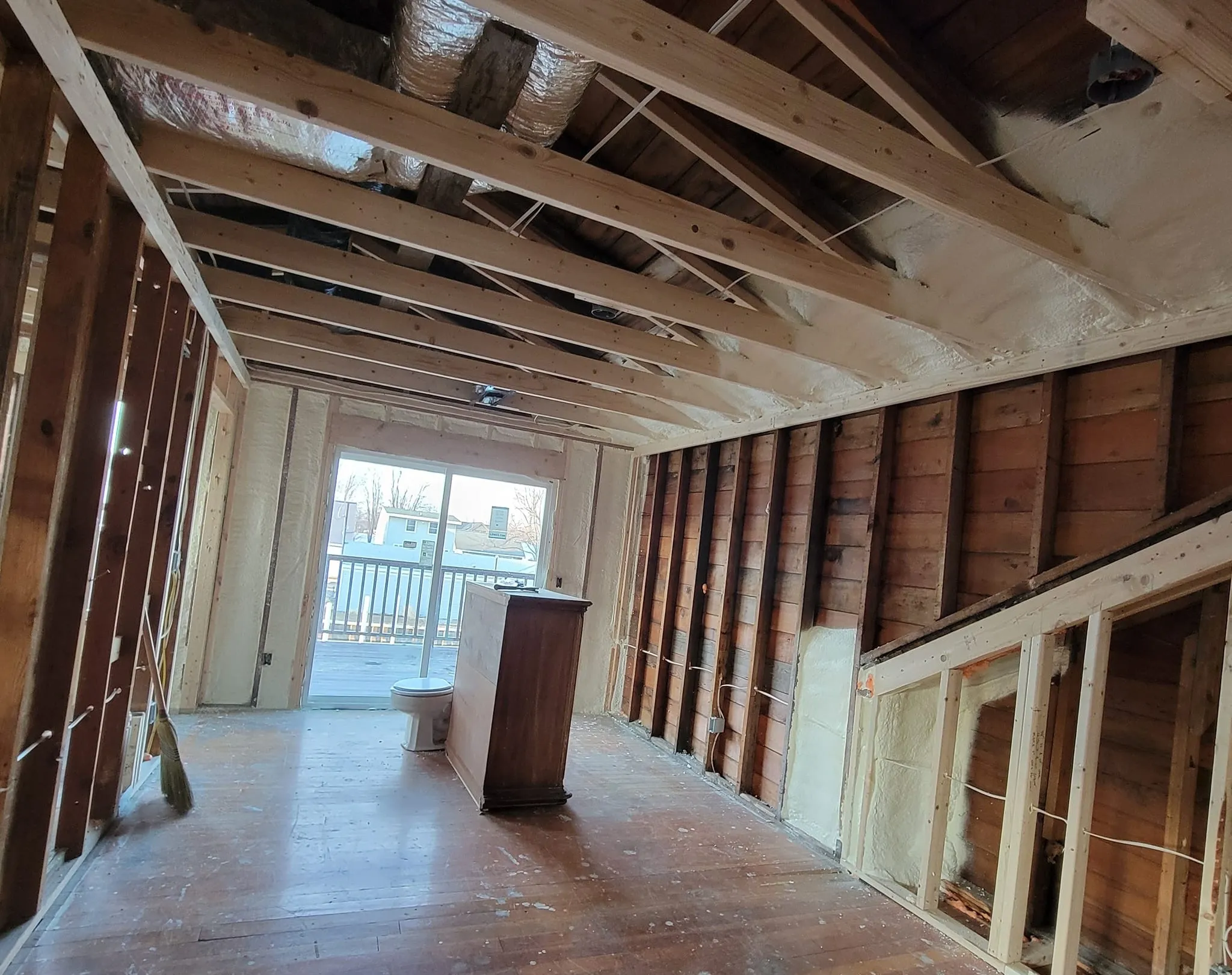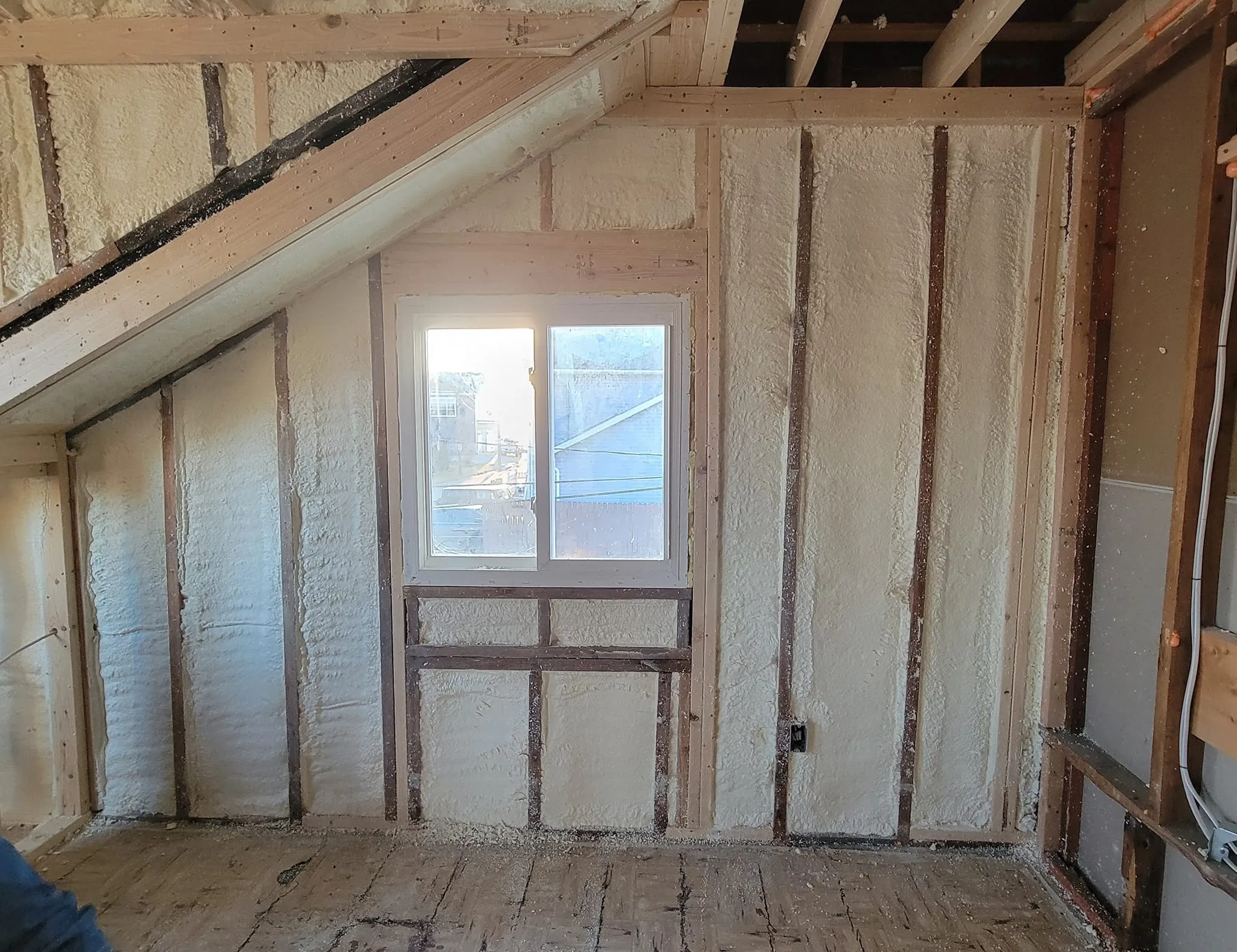
Energy-efficient spray foam insulation delivers superior thermal performance and air sealing capabilities that can reduce heating and cooling costs by 30-50% in Michigan homes. The material expands to fill gaps and cracks completely, creating an airtight barrier that prevents energy loss through infiltration. Professional installation ensures proper application thickness, coverage, and safety protocols while maximizing long-term performance benefits.
Eastpointe homeowners face unique climate challenges that make spray foam insulation particularly valuable. The region’s temperature fluctuations and humidity levels demand insulation solutions that perform consistently across seasons while preventing moisture-related issues.
Michigan’s continental climate creates demanding conditions for insulation systems. Temperature swings from sub-zero winters to humid summers test insulation materials continuously. Spray foam addresses these challenges through its dual function as both insulation and air barrier.
The material’s closed-cell structure provides exceptional moisture resistance, crucial for preventing ice dam formation and condensation issues common in Eastpointe homes. Open-cell spray foam offers different benefits, providing excellent sound dampening while maintaining breathability for certain applications.
Bonus Tip: Schedule spray foam installation during moderate weather conditions (50-80°F) for optimal expansion and curing. Extreme temperatures can affect application quality and final performance characteristics.
Eastpointe’s proximity to Lake St. Clair creates specific humidity patterns that influence insulation selection. Properties near the waterfront experience higher moisture loads, making closed-cell spray foam the preferred choice for basement and crawl space applications.
Wind exposure varies significantly across Eastpointe neighborhoods. Homes in open areas benefit from spray foam’s superior air sealing properties, which eliminate drafts that traditional insulation cannot address effectively.
Different spray foam formulations serve specific purposes within residential insulation systems. Understanding these distinctions helps homeowners select appropriate materials for each application area.
| Foam Type | R-Value per Inch | Best Applications | Moisture Resistance |
|---|---|---|---|
| Closed-Cell | 6.0-7.0 | Basements, crawl spaces, exterior walls | Excellent |
| Open-Cell | 3.6-4.0 | Attics, interior walls, sound dampening | Good |
| High-Density | 7.0-8.0 | Commercial, extreme conditions | Superior |
Proper thickness ensures optimal performance and prevents common installation problems. Insufficient thickness reduces R-value while excessive application wastes material and increases costs unnecessarily.
| Location | Recommended Thickness | Target R-Value | Climate Zone Benefits |
|---|---|---|---|
| Attic Floor | 10-14 inches | R-38 to R-49 | Maximum heat retention |
| Exterior Walls | 3-4 inches | R-18 to R-25 | Eliminates thermal bridging |
| Basement Walls | 2-3 inches | R-12 to R-18 | Moisture and thermal control |
| Crawl Space | 2-4 inches | R-12 to R-25 | Complete encapsulation |
Professional installation requires specialized equipment and extensive training to achieve consistent results. Surface preparation, temperature control, and application technique directly impact final performance and longevity.
Quality installations begin with thorough surface cleaning and inspection for air leaks or moisture issues. Substrates must be dry and structurally sound before foam application begins. Ambient temperature and humidity conditions affect foam expansion and adhesion characteristics.
Bonus Tip: Remove old insulation before spray foam installation in retrofit applications. Existing materials can harbor moisture, pests, or contaminants that compromise new foam performance.
Spray foam installation requires temporary evacuation of occupied spaces during application and initial curing. Chemical off-gassing peaks within the first 24-48 hours, necessitating proper ventilation protocols.
Professional installers use respiratory protection and follow strict safety procedures to prevent exposure risks. Homeowners should verify contractor certification and insurance coverage before project initiation.

Project timing affects both installation quality and household disruption. Spring and fall offer optimal weather conditions, while summer and winter installations may require additional precautions or scheduling flexibility.
Existing ventilation systems may require modifications after spray foam installation. The material’s air sealing properties can reduce natural air exchange, potentially necessitating mechanical ventilation upgrades to maintain indoor air quality.
Budget considerations extend beyond initial installation costs. Energy savings typically offset investment within 3-7 years, but financing options and utility rebates can improve project economics significantly.
Building code compliance varies by application and local requirements. Permit requirements, fire ratings, and thermal barriers must be addressed during planning phases to avoid complications or additional costs.
Colony Insulation specializes in comprehensive insulation solutions tailored to Michigan’s climate demands. Professional installation ensures maximum energy efficiency and long-term performance across residential and commercial applications.
Energy audits identify specific areas where spray foam provides maximum benefit relative to cost. Thermal imaging reveals air leakage patterns and temperature differentials that guide installation priorities effectively.
Utility rebate programs often offset 10-30% of installation costs for qualifying efficiency improvements. Documentation requirements and pre-approval processes vary by utility provider, making early research beneficial for project planning.
Long-term maintenance involves periodic visual inspections and prompt repair of any damaged areas. Mechanical damage from renovations or pest activity requires professional assessment to maintain system integrity.
Performance monitoring through utility bills provides objective measurement of energy savings achieved. Significant reductions in heating and cooling costs typically become apparent within the first seasonal cycle after installation.
Bonus Tip: Combine spray foam installation with other efficiency upgrades like air sealing, duct sealing, or HVAC maintenance for compounded energy savings and improved comfort.
Choosing qualified contractors ensures proper installation techniques, appropriate material selection, and compliance with building codes and manufacturer specifications. Certification programs and ongoing training distinguish experienced professionals from general contractors.
Insurance coverage protects both contractors and property owners from potential installation-related issues. Verify liability insurance, workers’ compensation, and bonding status before project commencement to avoid potential complications.
Warranty terms vary significantly between contractors and materials. Comprehensive warranties cover both labor and materials for extended periods, providing long-term protection and peace of mind for significant investments.
For expert spray foam insulation services in Eastpointe, Colony Insulation provides comprehensive solutions backed by extensive experience and professional certification. Contact Colony Insulation at (586) 488-2928 or [email protected] to schedule consultation and detailed project assessment for your property’s specific needs.
Most residential applications require 4-8 hours depending on square footage and complexity. Multi-story homes or extensive air sealing work may extend installation time to multiple days.
Standard reoccupancy timing is 24 hours after installation completion, allowing adequate curing and off-gassing reduction. Sensitive individuals may prefer longer waiting periods.
Properly installed spray foam maintains performance for decades without degradation. Visual inspections every few years identify any damage or settling that might require minor repairs.
New spray foam adheres poorly to old insulation materials and may trap moisture or contaminants. Complete removal of existing materials ensures optimal performance and prevents future problems.
Rim joists, attic floors, and basement walls typically provide the highest return on investment. These areas experience significant air leakage and thermal bridging in traditional insulation systems.